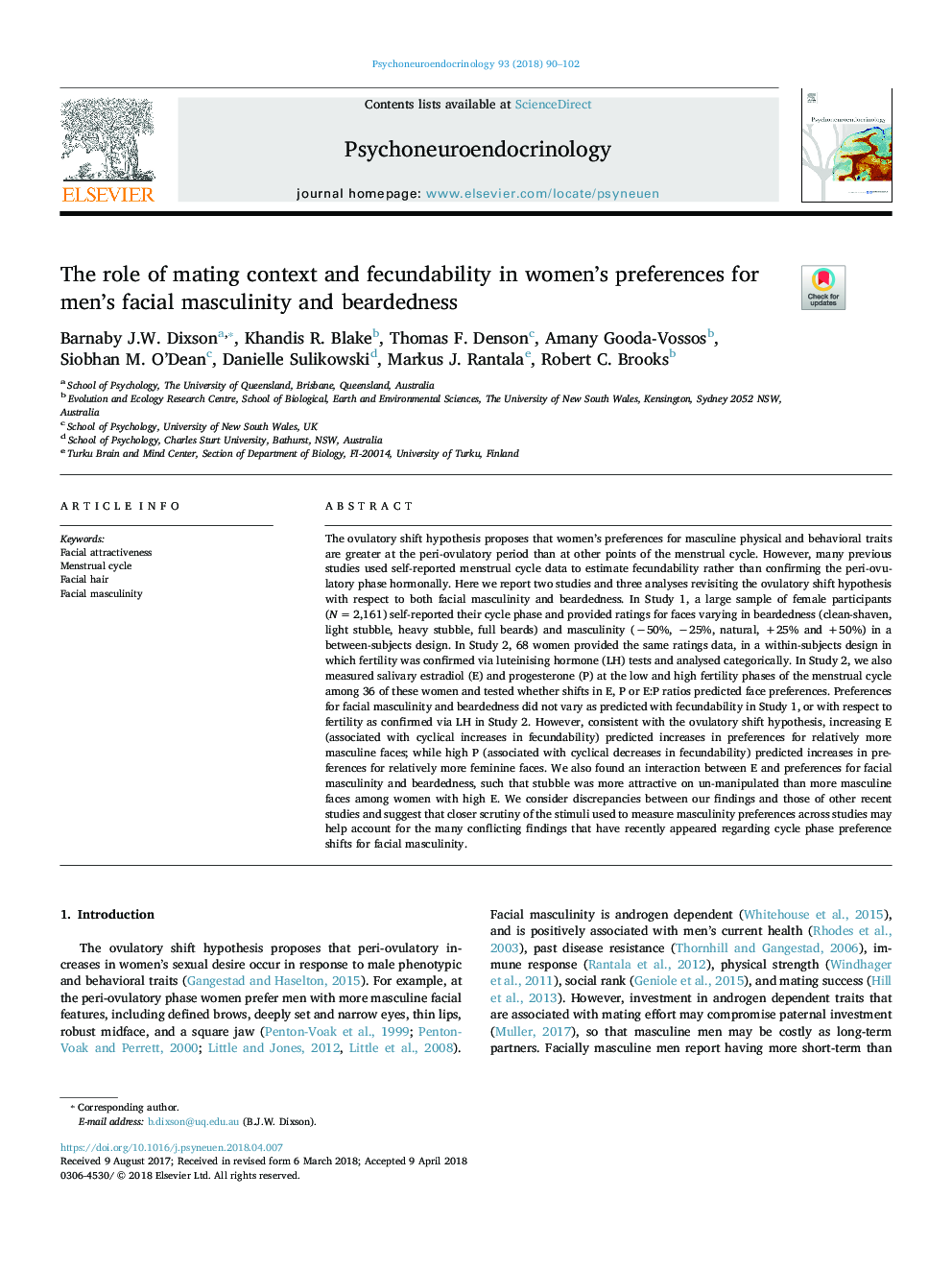| کد مقاله | کد نشریه | سال انتشار | مقاله انگلیسی | نسخه تمام متن |
|---|---|---|---|---|
| 6817602 | 1433950 | 2018 | 13 صفحه PDF | دانلود رایگان |
عنوان انگلیسی مقاله ISI
The role of mating context and fecundability in women's preferences for men's facial masculinity and beardedness
ترجمه فارسی عنوان
نقش مضراب زدن و پوسیدگی در تنظیمات زنان برای مردانگی مردان و ریشوادگی
دانلود مقاله + سفارش ترجمه
دانلود مقاله ISI انگلیسی
رایگان برای ایرانیان
کلمات کلیدی
جذابیت صورت، چرخه قاعدگی، موی صورت، مردانگی صورت،
موضوعات مرتبط
علوم زیستی و بیوفناوری
بیوشیمی، ژنتیک و زیست شناسی مولکولی
علوم غدد
چکیده انگلیسی
The ovulatory shift hypothesis proposes that women's preferences for masculine physical and behavioral traits are greater at the peri-ovulatory period than at other points of the menstrual cycle. However, many previous studies used self-reported menstrual cycle data to estimate fecundability rather than confirming the peri-ovulatory phase hormonally. Here we report two studies and three analyses revisiting the ovulatory shift hypothesis with respect to both facial masculinity and beardedness. In Study 1, a large sample of female participants (Nâ¯=â¯2,161) self-reported their cycle phase and provided ratings for faces varying in beardedness (clean-shaven, light stubble, heavy stubble, full beards) and masculinity (â50%, â25%, natural, +25% and +50%) in a between-subjects design. In Study 2, 68 women provided the same ratings data, in a within-subjects design in which fertility was confirmed via luteinising hormone (LH) tests and analysed categorically. In Study 2, we also measured salivary estradiol (E) and progesterone (P) at the low and high fertility phases of the menstrual cycle among 36 of these women and tested whether shifts in E, P or E:P ratios predicted face preferences. Preferences for facial masculinity and beardedness did not vary as predicted with fecundability in Study 1, or with respect to fertility as confirmed via LH in Study 2. However, consistent with the ovulatory shift hypothesis, increasing E (associated with cyclical increases in fecundability) predicted increases in preferences for relatively more masculine faces; while high P (associated with cyclical decreases in fecundability) predicted increases in preferences for relatively more feminine faces. We also found an interaction between E and preferences for facial masculinity and beardedness, such that stubble was more attractive on un-manipulated than more masculine faces among women with high E. We consider discrepancies between our findings and those of other recent studies and suggest that closer scrutiny of the stimuli used to measure masculinity preferences across studies may help account for the many conflicting findings that have recently appeared regarding cycle phase preference shifts for facial masculinity.
ناشر
Database: Elsevier - ScienceDirect (ساینس دایرکت)
Journal: Psychoneuroendocrinology - Volume 93, July 2018, Pages 90-102
Journal: Psychoneuroendocrinology - Volume 93, July 2018, Pages 90-102
نویسندگان
Barnaby J.W. Dixson, Khandis R. Blake, Thomas F. Denson, Amany Gooda-Vossos, Siobhan M. O'Dean, Danielle Sulikowski, Markus J. Rantala, Robert C. Brooks,
